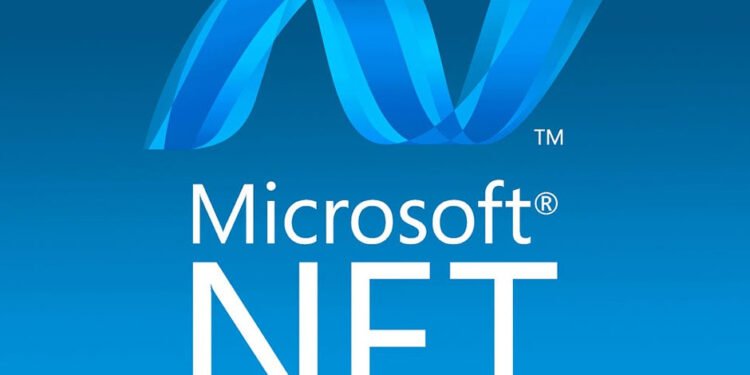.NET is one of the most versatile, free, cross-platform development platforms that has gained developers’ trust and vote over the years. A platform is as reliable and easy to use for developers as its availability of libraries, tools, and resources that makes helps make the development, testing, debugging, and other aspects of development easier. .NET is one such platform that has a wide range of libraries that are designed and developed to simplify and boost various aspects of web development.
This blog aims to explore the top .NET libraries, giving you a basic idea of their main purpose, key features, pros and cons, and use cases. Proper knowledge of these tools can help improve the efficiency and development awareness of .NET developers significantly, which is why companies looking for .NET services should hire .NET developers with expertise in utilizing such libraries and tools.
Top .NET Libraries to Use in 2023
We have curated this list of the best .NET libraries that aid various aspects of the .NET development process, such as database communications, web development, JSON serialization, etc. Without further ado, let’s dive right into this list –
Entity Framework
Entity Framework is a secure and robust Object-Relational Mapping library that aids developers in integrating databases with .NET objects. It is used for abstracting the complexities of database interactions, enabling a better-level interface for data access.
Key Features of Entity Framework
- Support for various database providers
- Built-in support for Language-Integrated Query (LINQ)
- Automatic and reliable database migrations
Pros of Entity Framework
- Entity framework follows a code-first approach
- Enables developers to focus on app logic without worrying about database systems
- Reduces boilerplate code dependency for data access
Cons of Entity Framework
- Prone to performance bottlenecks in extremely complex situations
- Limited manual control over queries
Best Use Cases of Entity Framework
- Data-driven applications
- Projects that need flexibility in working with different database providers
- Applications that need an easy-to-maintain database schema
AutoMapper
AutoMapper is one of the most popular object-to-object mapping libraries that maps the properties of two objects. It helps developers remove repetitive code for mapping properties between different object types. Thus, it leads to a reduced workload on the developer’s end and reduced unwanted code from the codebase.
Key Features of AutoMapper
- Object-to-Object Mapping
- Multiple configuration options
- Support for projection
- Convention-based Mapping
- Global Mapping Profiles
Pros of AutoMapper
- Helps improve productivity by automating most mapping tasks
- Abstracting the mapping logic, the code becomes more concise and readable
- Developers can customize the mapping behavior to match specific needs
- Centralized mapping configuration results in lesser maintenance costs
- Built-in validation features help identify mapping issues easily
Cons of AutoMapper
- Developers might face a steep learning curve for setting complex mapping situations before getting comfortable with AutoMapper.
- Complex mapping situations with large collections of objects or complex transformations may result in performance inefficiency.
- Dependency on reflections can cause some overhead in terms of performance
- The in-built validation tool is not as efficient in catching all mapping errors
Best Use Cases of AutoMapper
- Businesses looking for data transformation for reporting needs
- Streamlining cross-platform data exchange
- Communicating between microservices for better decoupling and interoperability
- Database migration and evolution services
- AutoMapper can be used for the early stages of prototyping in Agile development.
Swashbuckle
Swashbuckle is a .NET library used for API documentation and testing of .NET Core Web APIs using the OpenAPI specification. It can automatically generate an interactive API documentation page with a friendly user interface for exploring, testing and understanding the exposed API endpoints.
Key Features of Swashbuckle
- Automatic API documentation from XML components
- Interactive API documentation
- API Endpoint editing and testing
- Automatic Documentation
- It can be integrated with the authentication
Pros of Swashbuckle
- Improve API discoverability and adoption
- Simplified API testing and debugging
- Enhanced team collaboration
Cons of Swashbuckle
- Configuration can be complex for advanced scenarios
- Limited support for advanced Swagger features
Best Use Cases of Swashbuckle
- API Documentation for External Stakeholders
- Large Project that has various API Endpoints
- Projects that need better cross-team collaboration
Polly
Polly is another impressive .NET library that helps developers build fault-tolerant applications with proper fault-handling facilities. Polly has interesting policies for circuit breaking, retrying, timeout, and other fallback mechanisms that help applications withstand predictable errors.
Key Features of Polly
- Retry Policy that allows developers to define retry attempts for transient failures like network/database errors
- Circuit break pattern that prevents or stops incoming calls to broken services
- Timeout Policies for setting manual timeouts for operations, leading to better resource management
- Fallout Policies that allow developers to switch the logic of a process if primary logic fails
Pros of Polly
- Increased application reliability and uptime
- It makes the system very adaptable and configurable
- It makes the system resilient and fail-safe
- Ability to integrate with several third-party libraries & frameworks
Cons of Polly
- It can be overused without realizing it, leading to more problems than benefits.
- Configuration needs to be precise and calculated without margin for errors
Best Use Cases of Polly
- Building microservices architecture that relies heavily on network communication
- High Volume Web APIs that perform better and more consistently
- Overcoming transient network errors & others in cloud computing
- Ensuring seamless communication with 3rd party APIs
MailKit
MailKit is a popular open-source .NET library for sending, receiving, and managing emails through an easy-to-configure API. It is feature-packed and supports various email protocols, making it ideal for handling all your mailing requirements.
Key Features of MailKit
- Sending/Receiving Emails
- MIME support and SSL/TLS Encryption
- Internationalization Support
Pros of MailKit
- Comprehensive email support
- Protocol flexibility and cross-platform compatibility
- Active developers and community
- High performance for email-intensive jobs
Cons of MailKit
- Steep learning curve than System.Net.Mail
- It uses asynchronous programming patterns
Best Use Cases of MailKit
- Email notifications for activities like account registration, subscription alerts, password recovery/reset links
- Ideal for Email Marketing with a high volume of emailers that need to be sent to subscribers
- Developing client-side email applications
Ocelot
Ocelot is an open-source API gateway for .NET Core designed to simplify the microservices-based architectures that act as reverse proxies for incoming requests. .NET developers can use Ocelot to create unified entry points for all their services.
Key Features of Ocelot
- Define custom routes for incoming HTTP requests.
- Load-balancing algorithm for handling multiple requests of the same service
- Define and structure authentication& authorization requests
Pros of Ocelot
- Simplified microservices management
- Handling cross-cutting concerns
- Smooth integration with .NET Core
- Very configurable and extensible
Cons of Ocelot
- Steep learning curve and initial setup
- Chances of becoming a centralized point of failure
Best Use Cases of Ocelot
- Developing microservices architecture
- Building simplified API Gateways
- Scalable and resilient Software Systems
Final Words
These are the top .NET libraries you should be aware of and use for your next .NET project. Suppose you are looking to hire dedicated developers to work on your .NET application. In that case, you should ensure they have the right knowledge and skills and a proper understanding of these .NET libraries, tools, and frameworks. This will help ensure that they are skilled, experienced, and reliable candidates to work on your project and help it reach the success it deserves.












